In The News
Association of Energy Engineers National Capital Chapter
Sharing our stories from March 2016-2017
As a reflection of the consistency and continuity of professional events organized in the past year by the AEE-National Capital Chapter (NCC), this article re-explores some of its insightful tours, intriguing panel discussions, social gatherings, and informative seminars inviting participation from leading industry experts, students and other AEE Members.
In the March of 2016, AEE-NCC took a look beyond LEED and into a realm of other programs promoting net zero energy and ultra-sustainable design and construction. The chapter hosted a Panel discussion with leading experts and practitioners from the Capital area on Passive House, the Living Building Challenge and Net-Zero Energy Design. As a result of advances in construction technologies, renewable energy systems, and academic research, creating Net Zero Energy buildings is becoming more and more feasible. On the panel was David Peabody, an architect who designed the first Passive House in the DC area. Committed to sustainability and education of the best energy practices, the chapter invited Susan Block Moores and Mike Binder from the Living Building Challenge to educate regarding the Living Building Challenge™ certification program. Concluding the event, Dr. Kim Roddis, the Faculty Coordinator for the Solar Decathalon Team of George Washington University shared the team’s participation in the Solar Decathalon competition that challenges groups to make buildings capable of net zero impact.
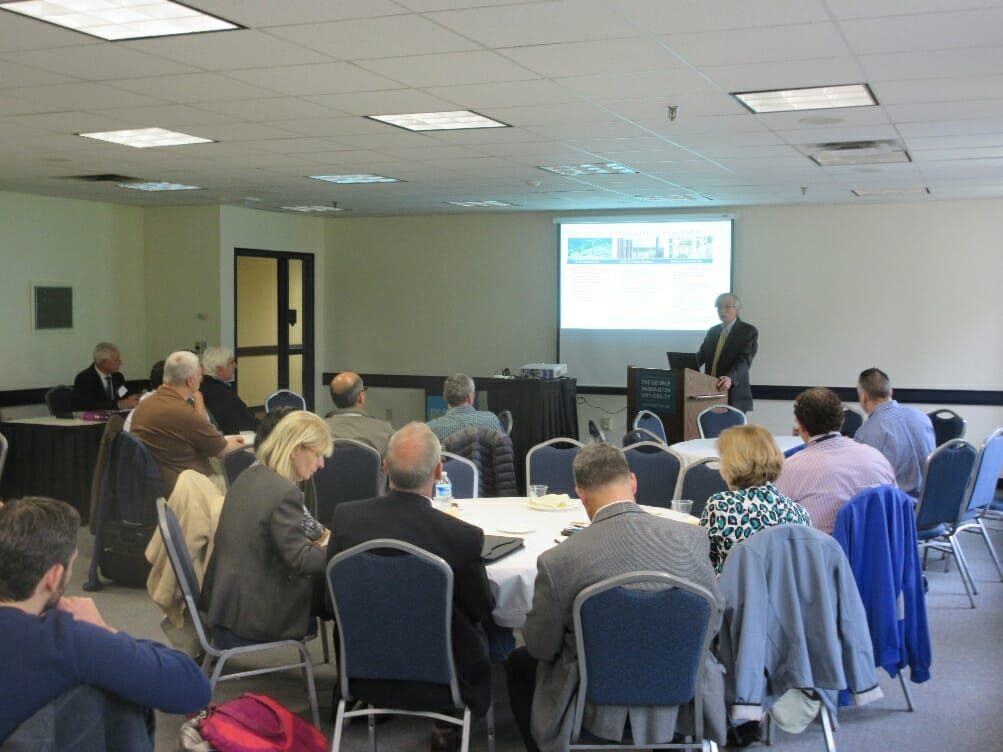 |
In April, 2016, AEE-NCC explored the subject of “Fracking”. Although there is debate about the risks versus the rewards, there is no doubt that U.S. proven energy reserves have increased dramatically due to a few new technologies. The topic of the presentation by was Hydraulic fracturing (Fracking): Horizontal Directional Drilling and the Shift from Scarcity to Abundance. The speaker, Mr. Rick Elliot gave us an overview of the perspective of the U.S. Department of Energy’s Fossil Energy Division. In this presentation, the attendees learned about how the conventional wisdom that assumed resource scarcity in this country has been flipped upside-down. The presentation included a primer on the technologies and techniques of Hydraulic Fracturing and Horizontal Drilling. The discussion then moved on to a domestic oil and natural gas production outlook to the year 2040. Next, the concept of staying power was covered which indicates an increase in production of oil and natural gas has been made possible despite a reduction in overall drilling operations which is driven by continuous optimization and drilling efficiency. We looked at some of the expected changes which are predicted in the area of transportation. Finally, the attendees explored the challenges of unconventional oil as well as the major areas of research taking place. This presentation was an incomparable opportunity to do research and get the facts surrounding “Fracking.”
Since its inception in 1981, the Certified Energy Manager® (CEM) credential has become widely accepted and used as a measure of professional accomplishment within the energy management field. The month of May brought the opportunity for upcoming and experienced energy professionals to earn the right to put the initials “CEM” behind their name. AEE NCC organized the 5-day CEM Training Course and Exam with Instructor, Barry Benator (P.E., CEM, CEA) who has more than 35 years consulting and training experience. Simply put, the designation CEM, recognizes individuals who have demonstrated high levels of experience, competence, proficiency, and ethical fitness in the energy management profession. By attaining the status of CEM, the program attendees joined an elite group of 14,500 professionals serving industry, business and government throughout the U.S. and in 25 countries abroad.
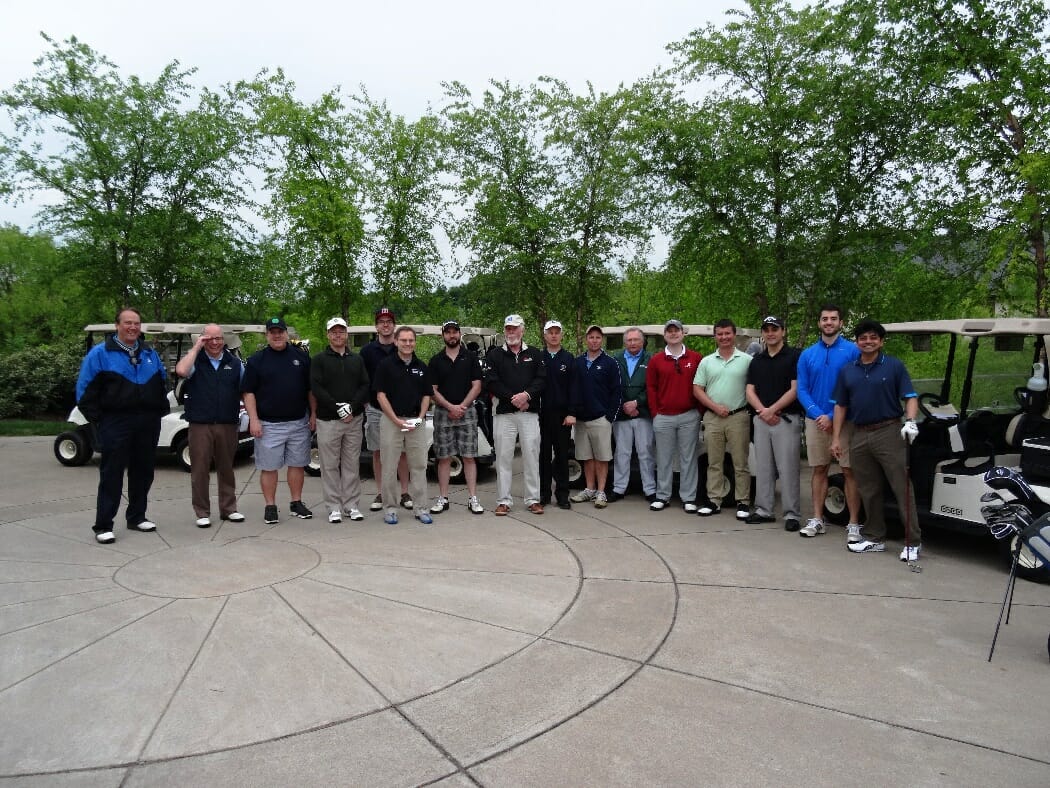 |
While we are gearing up for this year’s Golf Classic, shared memories from last year’s still fill the discussion table. The event included 18 holes of fun-filled golf and a variety of trophies and prizes. The generous participation of the AEE NCC members enabled a portion of the proceeds towards College Scholarships. Routed through gently rolling terrain with elevation changes up to 30 feet, the golfers enjoyed dramatic views of Broad Run and the majestic Virginia landscape, along with strategically placed bunkers, streams and lakes at the 1757 Golf Club, one of Northern Virginia’s premier Golf Course & Facility.
In June of 2016, Naval Support Activity Annapolis (NSAA) hosted AEE-NCC for a presentation and tour of energy conservation initiatives in support of the Secretary of the Navy’s Great Green Fleet (GGF) initiative. Members of NSA Annapolis, Baltimore Gas & Electric, and Constellation Energy provided information about the plant itself and the specific energy conservation measures that were implemented at this site to make it such a successful project. 50 members of the chapter attended the presentation describing the energy conservation measures completed at the U.S. Naval Academy and NSAA.
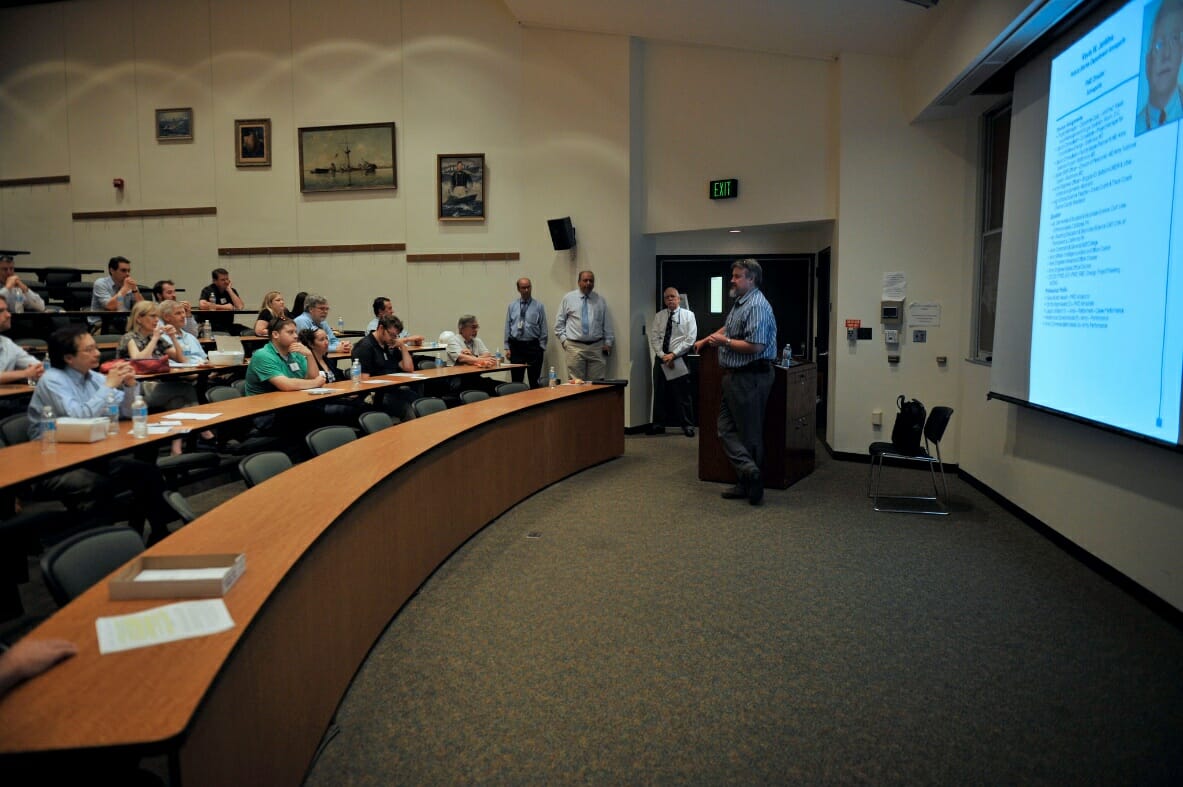 |
“We are trying to showcase what the Navy has done with its efforts to conserve energy here at NSA Annapolis to meet the Secretary of the Navy’s executive order,” said Chi Chiu, NSAA Public Works mechanical engineer. After the presentation, the participants took a tour of the recently completed water treatment plant, central heating plant and the chill water plant. These facilities went through major updates to make them energy efficient and environmentally friendly. “I think this is a great example; the Navy has always been in front of the country leading the way as far as conserving energy, in my opinion,” said John Lord, president of the Association of Energy Engineers/National Capital Chapter. “I think what the installation has been able to do is been really fantastic; the payback on these projects are great, the return on the investment for the U.S. taxpayer has been great. I think we’re using energy efficiency as our first line of defense to keep from having a reliance on foreign sources, and that’s what this country is all about; that’s what energy management is supposed to be doing.”
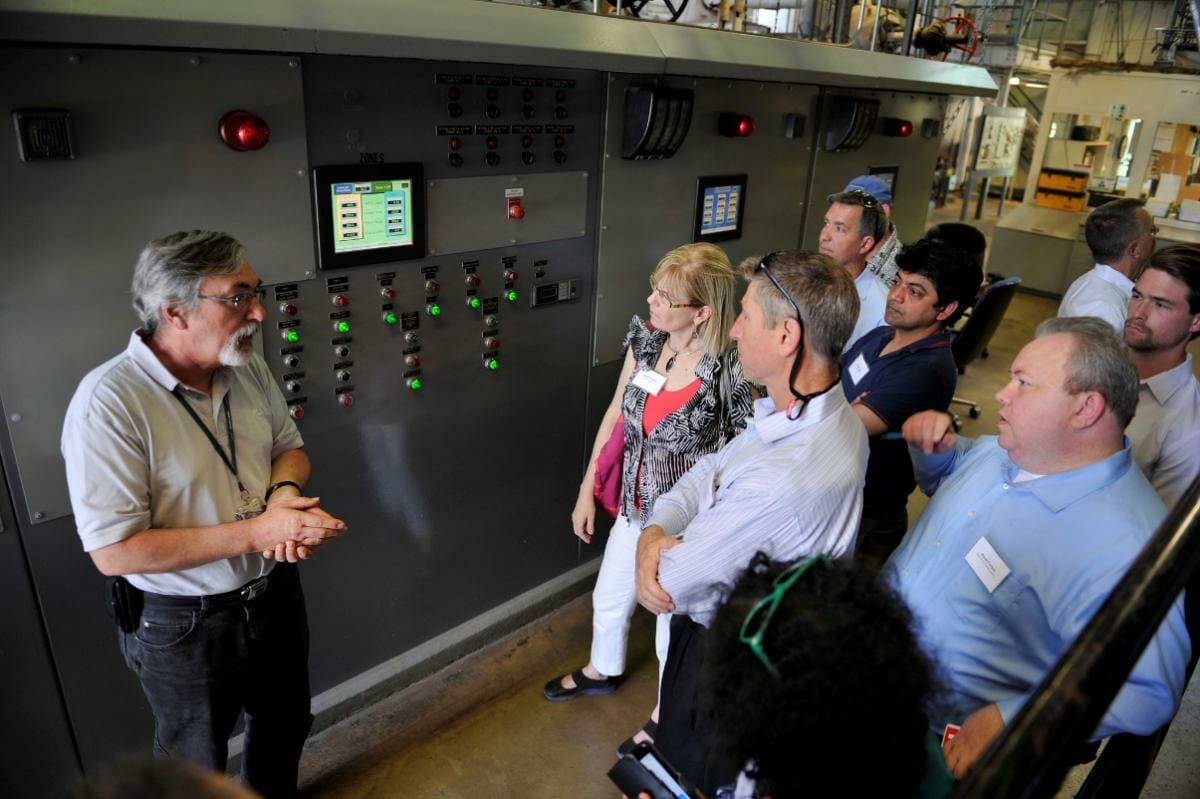 |
The water treatment plant project alone will reduce the water treatment plant’s water draw by nearly one-third or about 125 million gallons annually, translating into over $1.5 million in annual savings. Chiu explained that in the six months the water plant has been active it has saved the Navy more than $200,000. “All three of these projects are very well planned and very well financed; I think that the connection between the individual who acts as the operator at the units and engineering teams and the independent contractors is running smoothly,” said Lord. “This is a textbook example of what the best practices for energy engineering are. It’s been great to be able to tour these facilities today. I’m going to have a renewed faith in the professionalism of engineers and the staff who run equipment, and if you show the kind of dedication that the NSA Annapolis team has shown and you have the kind of leadership that Capt. Jones (NSAA commanding officer) [and that the Navy] has put behind the Great Green Fleet you really can do great things,” said Lord. “You just have to be dedicated to overcome the little obstacles that get on your way.”
AEE-NCC organized a tour in the month of July where our tour participants became some of the first people on Earth to see the inside of the Smithsonian Institution’s new African American History & Culture Museum. The participants heard from Ms. Kendra Gastright who has more than 16 years of experience managing facilities both at the Smithsonian Institution and in the Navy.
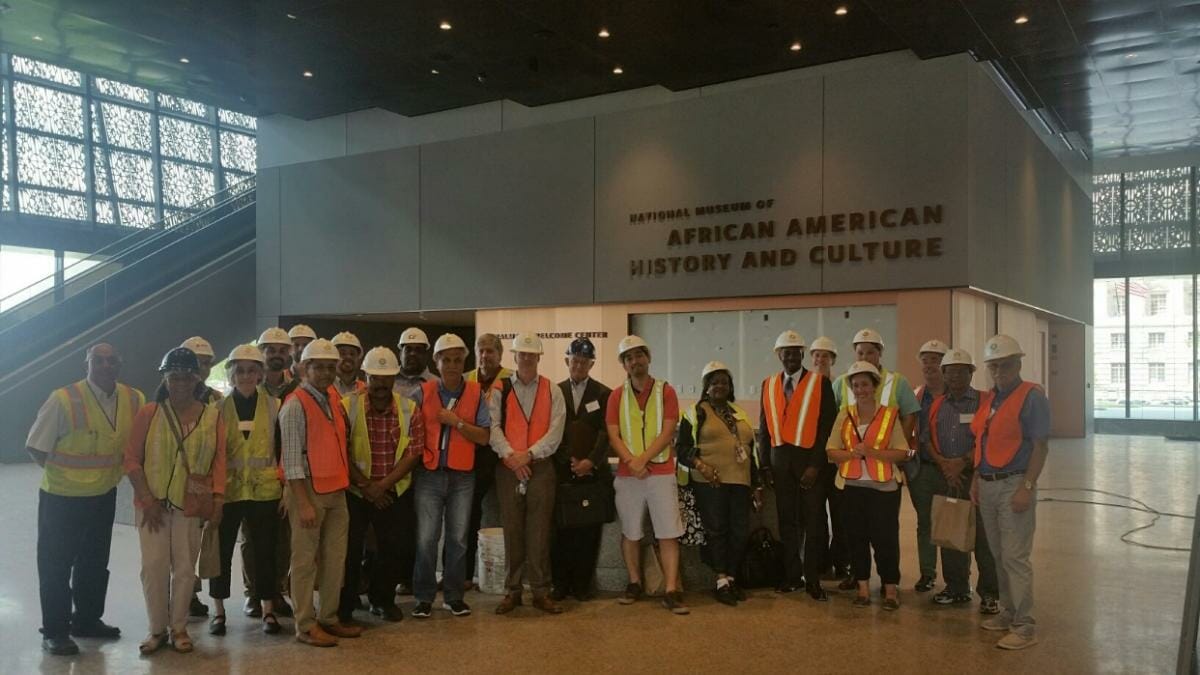 |
In her current role as Director of the Office of Facilities Management and Reliability, Kendra is responsible for operating and maintaining the Smithsonian facilities through a budget of about $100 million and a staff of nearly 900. Participants learned from her about the Smithsonian Institution’s energy management and sustainability efforts and had lunch at the American History Museum, after which the participants toured the mechanical rooms and support areas of the new African American History & Culture Museum.
In the series of the amazing tours being organized by AEE-NCC, the tour to the DC Water Facility was arranged in August, 2016. Since the last tour of AEE-NCC in May of 2014, a number of important additions and updates were made to the DC Water facility. This tour included a presentation from Senior DC Water officials regarding efforts made to reduce energy and environmental impact at one of the largest municipal wastewater treatment facilities in the world.
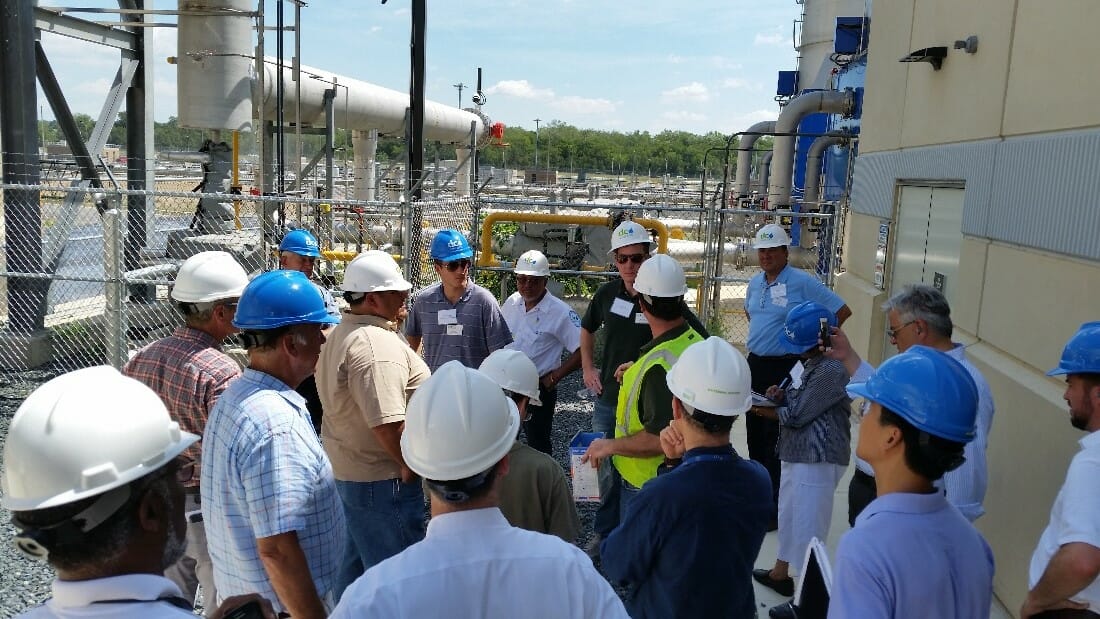 |
DC water also has to deal with wastewater systems that combine both storm water and sewer water. During periods of intense rainfall, the wastewater system exceeds its capacity and will overflow into to Rock Creek and the Anacostia and Potomac rivers. The DC Water Clean Rivers Project (Combined Sewer Overflow Control Program) will implement a system of tunnels, sewers and other diversion structures to control and capture overflow throughout the city. The tour also included a presentation showing how advanced tunneling technology is being put to use.
The National Capital Chapter luncheon in September, 2016 featured a special presentation from Kelly Speakes-Backman. The topic was: “Energy Markets are Changing: So What’s New, How Can You Tell, and Who Cares?” Kelly is Senior Vice President of Policy and Research at the Alliance to Save Energy. She is a former Commissioner of the Maryland Public Service Commission where she also served as Chair of the Board of Directors of the Regional Greenhouse Gas Initiative, co-vice chair of the National Association of Regulatory Utility Commissioners Committee on Energy Resources and the Environment, and member of the EPRI Energy Efficiency & Grid Modernization Public Advisory Group. In addition to commenting on various chapters from her career, she discussed how energy markets, and electricity in particular, are always changing. Over time, what’s old becomes new again. She explained how it is important to recognize the patterns, which increasingly require an engineering, risk management and systems integration perspective, to keep pace with the changes in technology. The significance of systematic analysis in energy policy was also highlighted in the luncheon event. With more data available to customers about their energy use, broader inclusion of a diverse set of stakeholders to shape policy and regulation shall be required. On a related note, the National Capital Chapter made a $10,000 donation to the AEE Foundation for student scholarships.
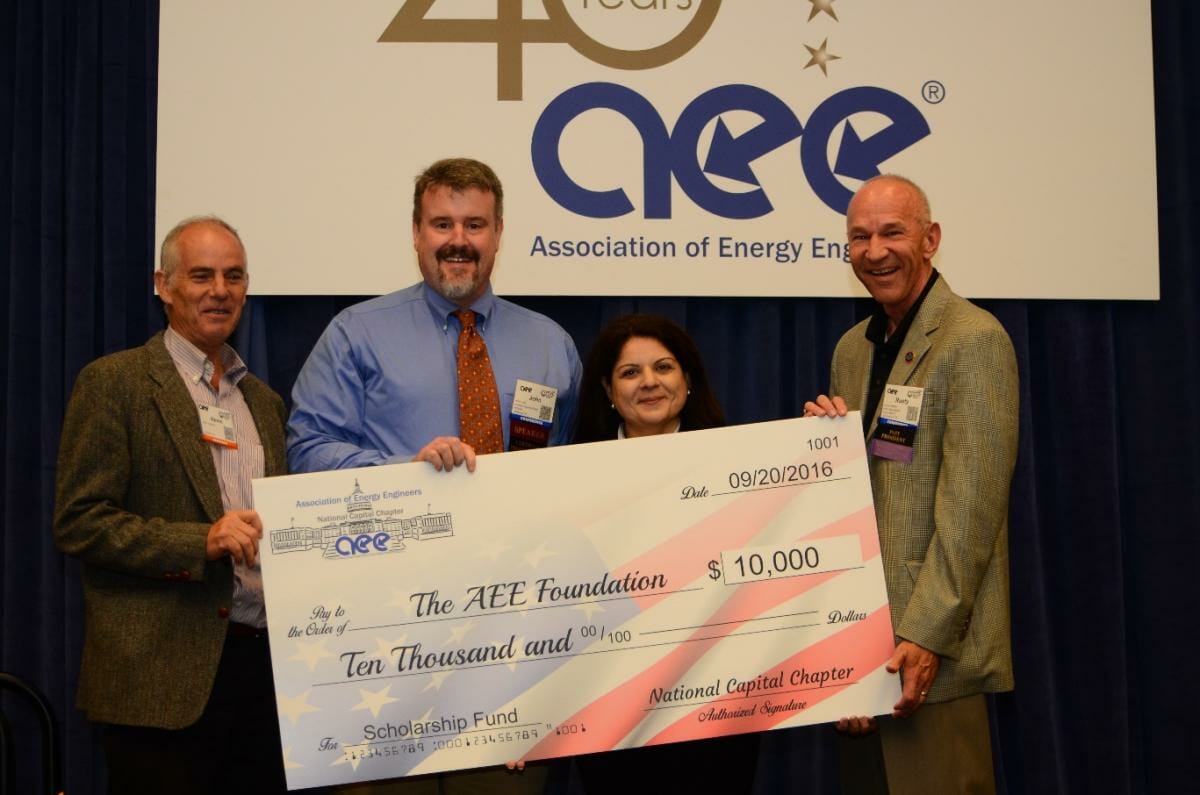 |
The Association of Energy Engineers – National Capital Chapter hosted its Fourth Annual Engineering Job Fair and Career Seminar and Luncheon in October, 2016. This was an outstanding opportunity for experienced engineers as well as students in engineering programs to meet prospective employers who hosted booths at the event. In addition, a Seminar: Finding Employment in the Energy Sector featuring professionals from the energy sector provided attendees with valuable information on how to find a job, the kinds of skills and experience employers are seeking, salary levels, and much, much more. Professionals from the energy sector provided attendees with valuable job hunting tips and information on employment for engineers.
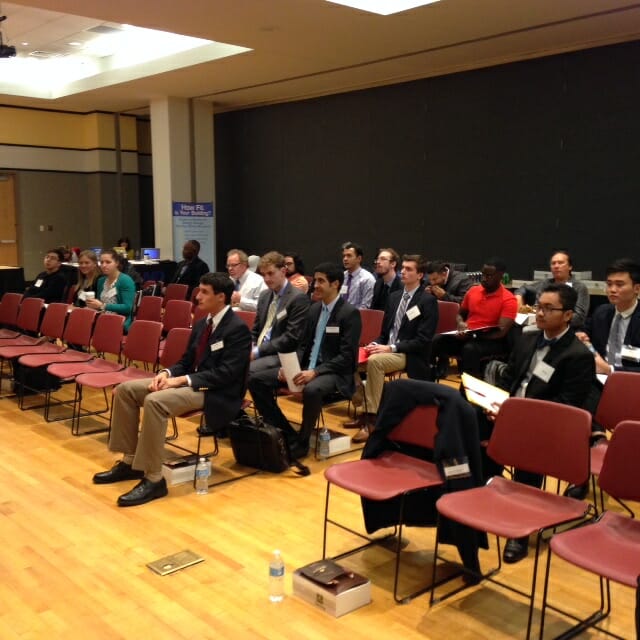 |
Experienced engineers and engineering students met 10 prospective employers from energy management fields. This was the widest array of employer options that AEE/NCC put together. Overall, this event provided outstanding career development and professional networking opportunities for National Capital Chapter members and non-members alike.
Electric vehicles (EVs) have the potential to be a major component of future net-zero communities. AEE-NCC learned about the history of electric vehicles, existing electric vehicle initiatives, and implications for future growth of EVs from electric vehicle experts in Electric Vehicles show and panel discussion event organized in November, 2016. In addition, the chapter hosted its very own electric vehicle Car Show featuring a Nissan Leaf, Chevrolet Volt, Kia Soul EV, and Tesla Model S.
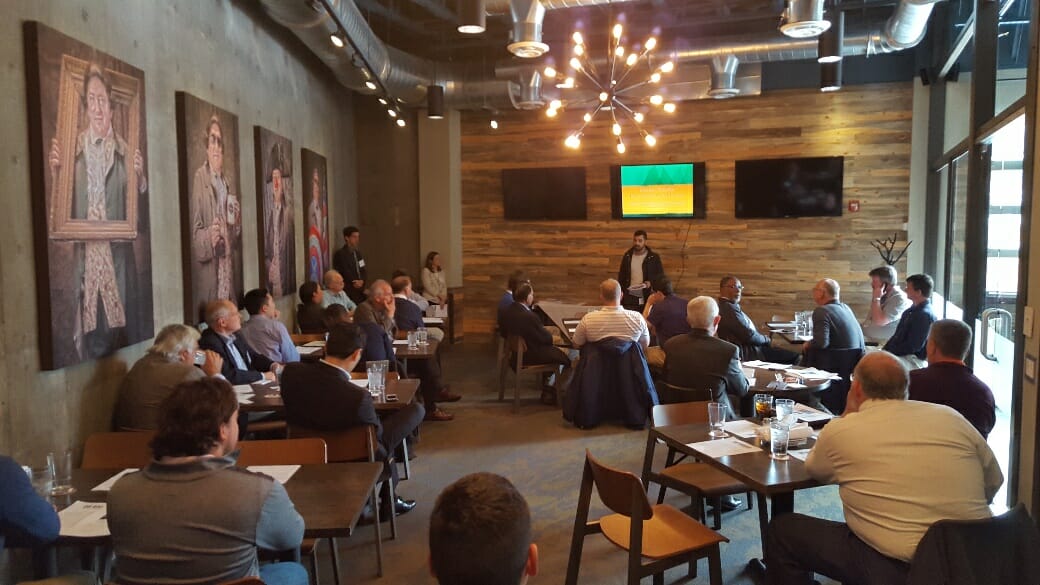 |
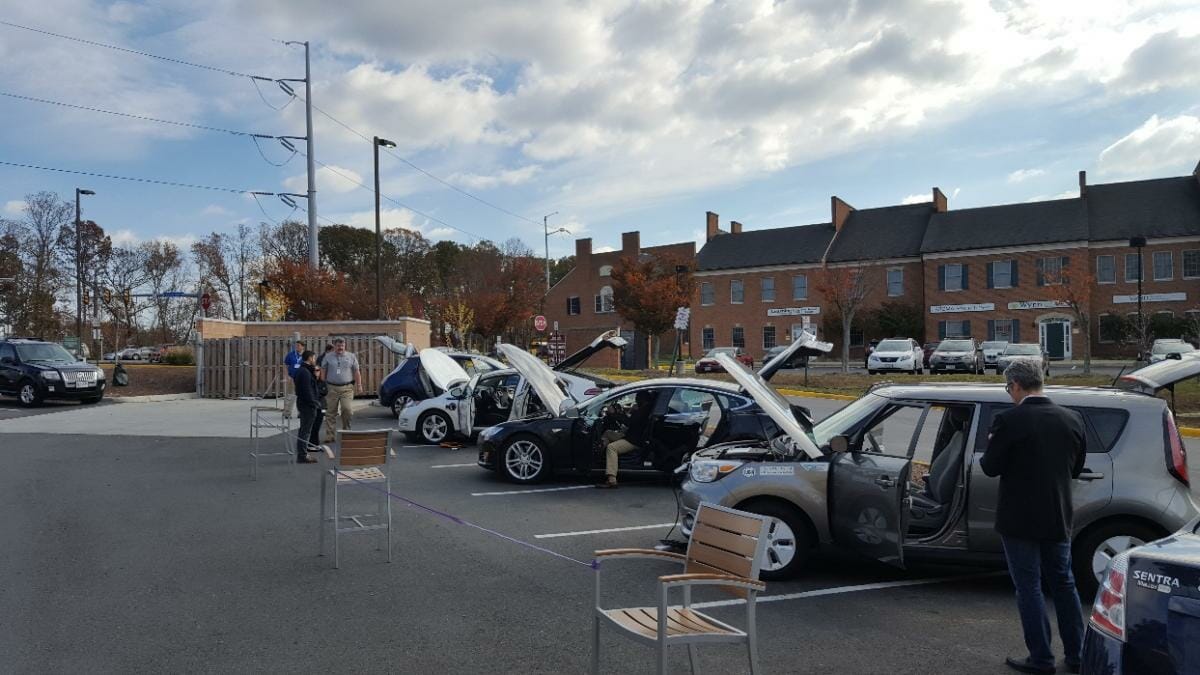 |
Participants included electric vehicle enthusiasts and industry experts invited for the panel discussion included Ronald Kaltenbaugh (President, Electric Vehicle Association of Greater Washington, D.C), Kate Staples (Renewable Energy Program Manager, Dominion Virginia Power), and Charles Girard (Energy & Economic Attache, Québec Office – Washington).
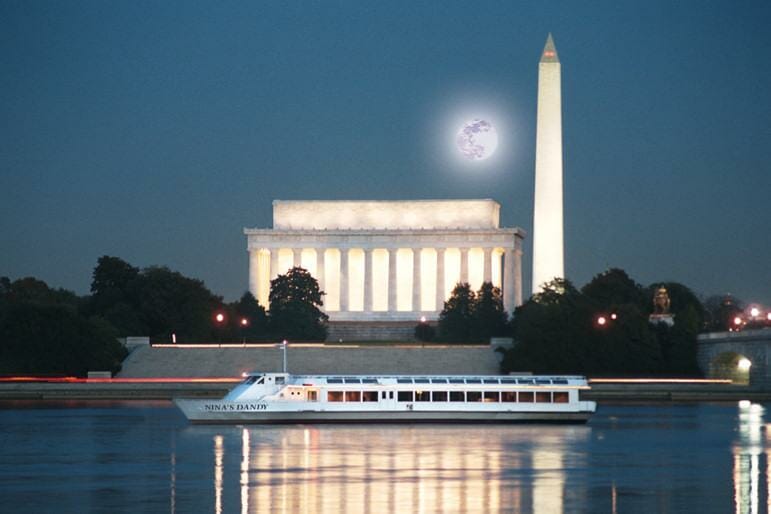 |
The chapter members took a beautiful Dinner Cruise as we celebrated the year’s accomplishments – The National Capital Chapter’s winning the “Most New Members Award” originally presented at the World Energy Engineering Congress! The dinner attendees had the opportunity of celebrating, dining, dancing, mingling, meeting our student chapter members, networking aboard the Nina’s Dandy.
For our first meeting of the 40th anniversary year of AEE, the chapter organized a panel discussion on emerging energy technologies in January, 2017. This luncheon event, covered a wide range of topics presented by an array of four industry experts at the George Washington University campus in Washington D.C.
Opening the panel Doug Millar (Regional Vice President Mid-Atlantic, Edison Energy), described co-generation as an effective way to achieve energy cost savings. His presentation provided an introduction to the 3 R’s of Energy Management namely, Resiliency, Reliability & Risk Management. He further described how the 3R’s can be optimized in projects pertaining to co-generation, microgrids, renewables, energy storage & procurement. The panel discussion was continued by the next speaker, Rajesh Sinha (Director-Americas of Thermax). He provided a detailed overview of the Vapor Absorption Technology that provides a cost-efficient cooling solution and has a reduced environmental impact compared to the conventional electricity-driven Compression chillers. The attendees learned that the unique feature of this technology lies in the usage of water as a refrigerant resulting in a high Coefficient of Performance (COP) ranging from 0.7-1.38 depending upon the temperature of inlet water and type of cycle used. Solar cooling involves usage of heat from the sun to get hot water, which in turn can drive the absorption chillers connected to cooling towers and provide chilled water (44°F). This technology can be customized to suit different types of solar concentrators.
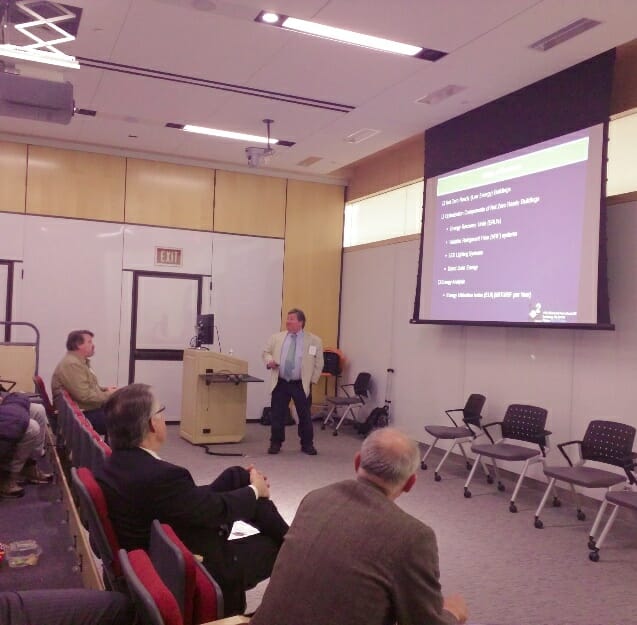 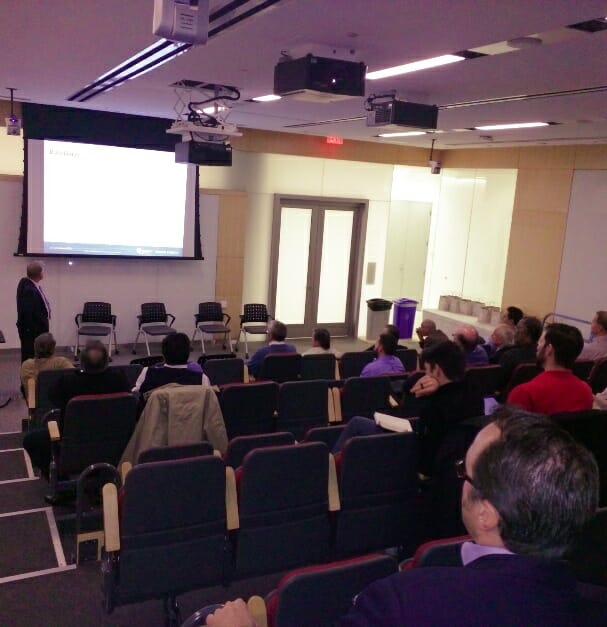 |
Bruce Beddow (Project Director of B2E Consulting Engineers), showed the implementation of innovative technologies such as Geo-Solar Heat Pump Systems in integrated low energy design for buildings. He described the role of Variable Refrigerant Flow (VRF) systems and Energy Recovery Units (ERU’s) in the optimization of Net Zero Ready buildings. Bruce further compared the designs of conventional and innovative systems in terms of reduction in energy consumption and improvement of indoor air quality. In his analysis for Energy Utilization Index (EUI), he described how the annual energy cost for a building can be lowered with each step of energy recovery. The panel ended with the final presentation by John Bergman (Consultant and Marketing Director, Havtech and President, John E Bergman LLC). John further described innovative heat pump technologies (water-to-air and water-to-water heat pumps) that can maximize heat recovery and apply to various settings including systems where simultaneous heating and cooling loads occur. He presented various configurations of modular chillers that can help in efficient use of energy and available floor area while being easy to maintain. All speakers for the AEE-NCC Panel Discussion provided an overview and practical implementation of their projects utilizing innovative energy efficient technologies and supported their information through case studies. The event sparked interest from a wide range of audience including students, young professionals, and industry leaders working in the area of energy efficiency and energy management. The panel session concluded a brief networking session where people asked questions from the speakers and presented their views.
In February 2017, showcasing four professional women in sustainability careers for the Council on Women in Energy and Environmental Leadership (CWEEL) luncheon panel, participants got their burning questions on career perspectives answered at the George Washington University. This luncheon is a special event conducted annually by the chapter to recognize CWEEL, which is a part of the Association of Energy Engineers. CWEEL supports the role of women in the energy and environmental industries. John Lord, President of the Association of Energy Engineers-National Capital Chapter (AEE NCC), gave opening remarks to the luncheon crowd. Panel moderator, Janine Finnell, Executive Director of Leaders in Energy and Board Member for the AEE NCC, provided the context for the panel discussion.
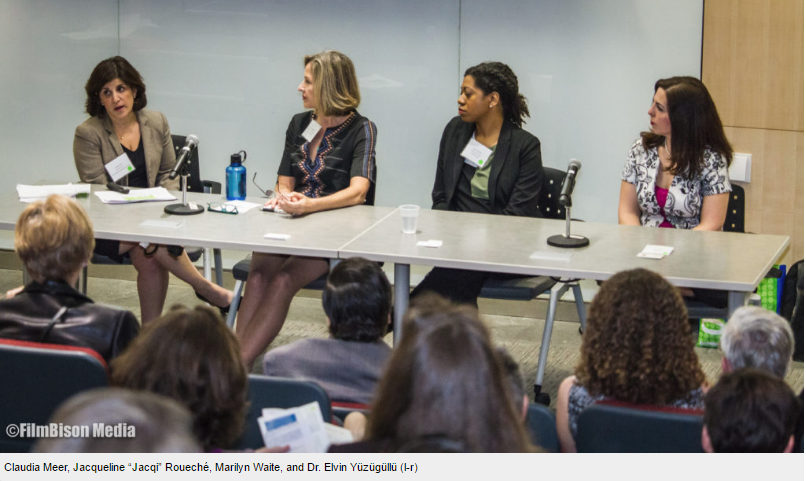 |
When asked about the career outlook in the energy and environmental field both today and in the future, the panelists used their backgrounds as a starting point. Claudia Meer, (Managing Director with Clark Energy and Structured Finance) noted that there have been many ways to enter the field besides engineering, such as finance and policy. Both Jacqueline “Jacqi” Roueché, a geological scientist and a trained petroleum engineer who has researched the behavior of captured and stored carbon dioxide, and Marilyn Waite, Energy Practice Lead at Village Capital and author of Sustainability at Work, see a growing demand for data scientists in the medium and long-term. With new technologies such as the Internet of Things, companies need people to make sense of big data. Waite added that in the short term, there will be a spike in state advocacy roles. Dr. Elvin Yüzügüllü, a GW professor and U.S. Department of Energy contractor, focused on big picture systems thinking, adding that there will still be a need for contractors and federal workers as well.
Hosted at the George Mason University, AEE/NCC’s recent event in March, 2017 discussed the work being done to evaluate the actual savings expected from various Power Quality solutions and will give some guidance as to the selection of these solutions based on energy savings. Dan Carnovale, PE, the Manager for Eaton’s Power Systems Experience Center was the speaker for the event who presented a paper titled “Power Quality Savings – What is Real?”. This seminar highlighted that one of the most significant changes in the Power Quality industry in the past five years is the method of selling Power Quality solutions. Originally, Power Quality solutions were sold as an insurance policy to avoid potential damage from power disturbances such as transients, voltage sags, interruptions or harmonics. Today, many Power Quality solution providers have found it more effective to promote energy cost reduction associated with their products rather than to deal with the soft savings associated with minimizing downtime or reducing damage to electrical equipment. The problem is that some of these solutions providers have significantly overstated the savings and the customers are deceived. While these solutions provide excellent protection, they often provide very little, if any, energy savings. This event gave a reality check on the energy savings resulting from the Power Quality solutions. More than 30 people including students and industry professionals joined at the event held at the GMU campus.
With great success and participation in the past year, the chapter gained new members and in sharing the values of AEE, the National Capital Chapter is committed to providing the best platform to encourage knowledge sharing while providing opportunities for professional growth to its members.